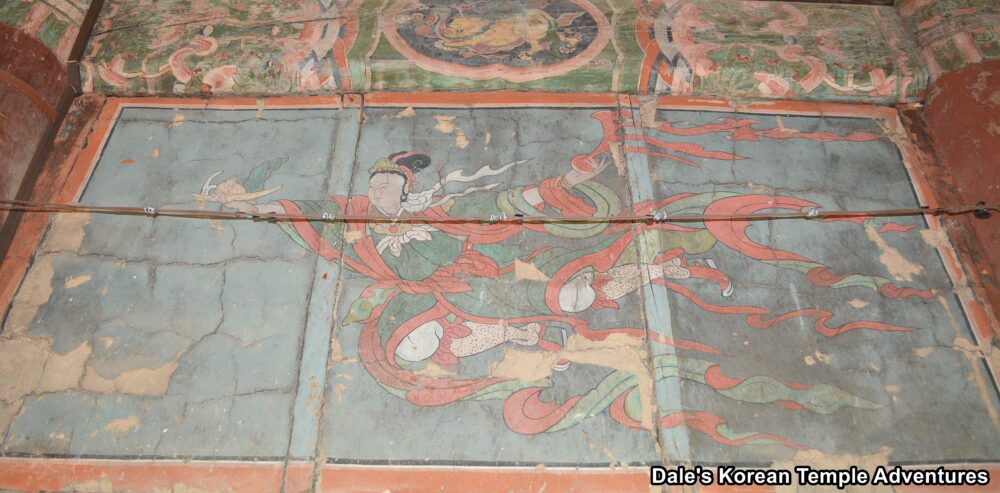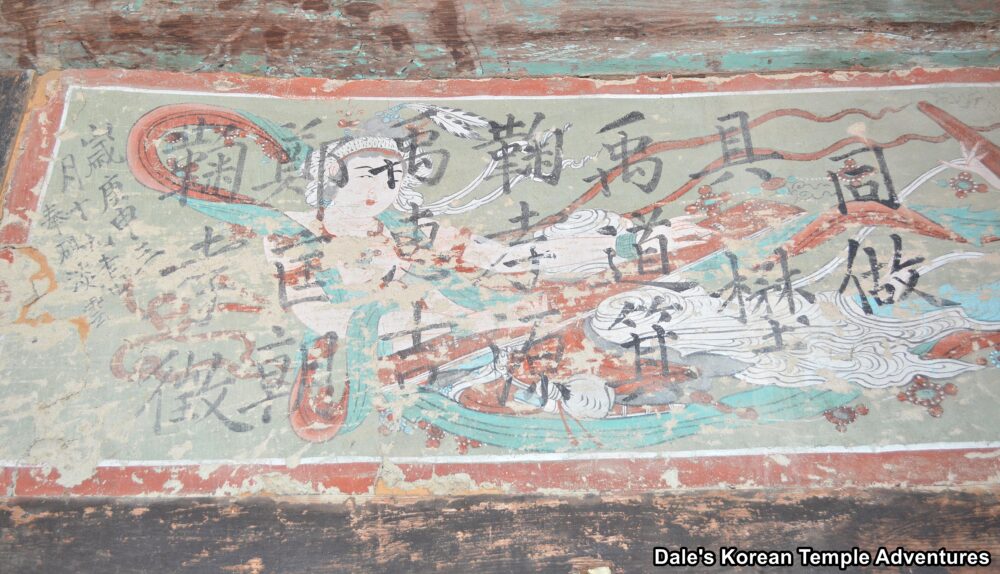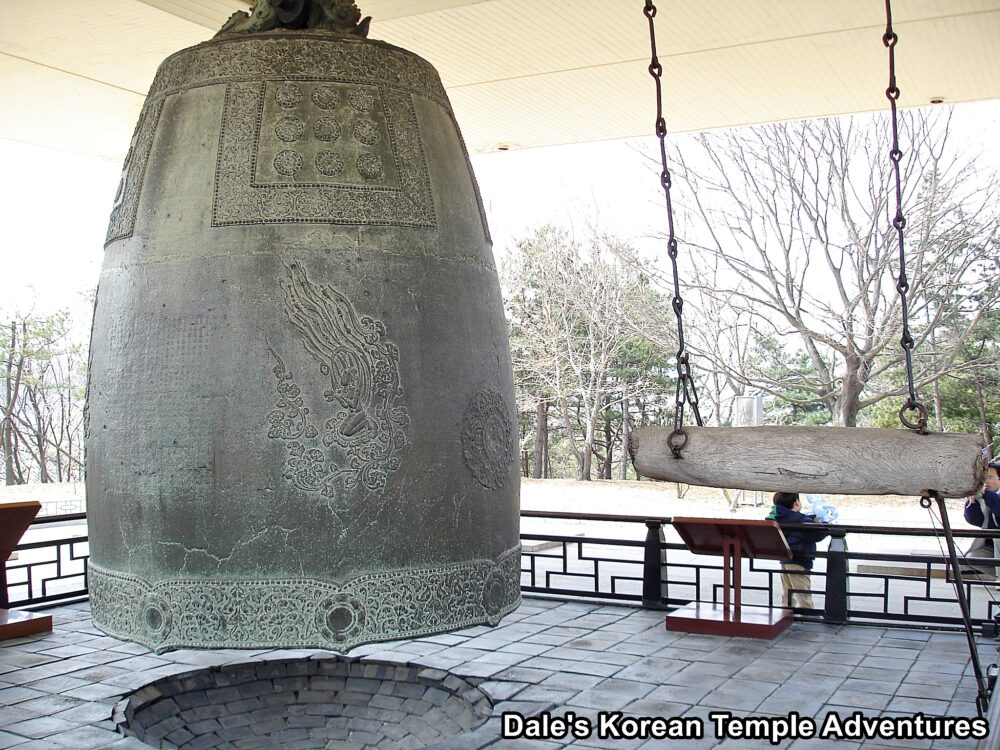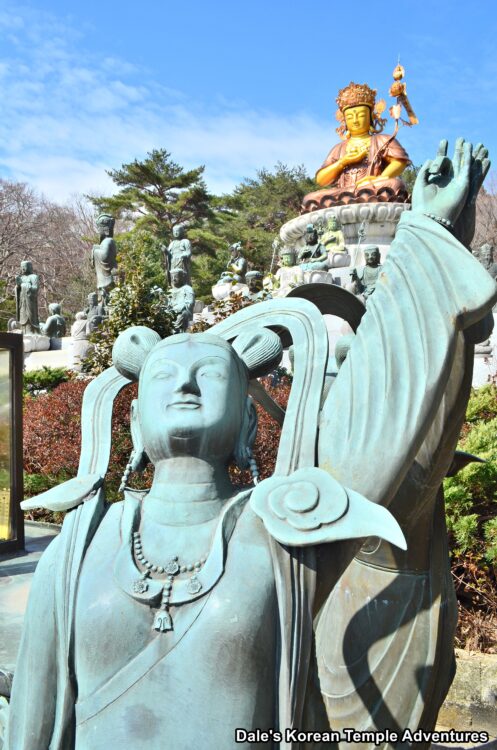Bicheon – Flying Heavenly Deities: 비천

Bicheon Introduction
One of the more common figures you’ll see floating around Korean Buddhist temples and hermitages are Bicheon. These angelic figures can pretty much appear on any and all surfaces at a Korean Buddhist temple like a Brahma Bell, a pagoda, and in and around temple shrine halls. So what do these popular figures represent? And why do they appear at Korean Buddhist temples and hermitages?

History of Bicheon
These angelic figures first appeared in India. And they are known as Apsaras. In Sanskrit, the word “Apsaras” means “going in the waters” or “between the waters of the clouds.” Apsaras are feminine shape-shifting spirits of the waters or clouds. They were first water nymphs that were born from of the churning of the ocean water. Apsaras can be found in Hindu, Buddhist, and Asian myth. Apsaras are often married to Gandharvas, who are heavenly beings found in Hinduism, Buddhism, and Jainism. Traditionally, Apsaras are known to seduce both men and gods alike. And they are known to dance in the halls of the gods. Apsaras are thought to be symbols of good fortune, and they are also associated with fertility. Originally, they were created to pleasure heroes and the gods.
There are two kinds of Apsaras. There is the worldly kind known as Laukika; and there are the divine kind, which are known as Daivika. In total, there are ten total Daivika, while there are thirty-four Laukika. It is also believed that if a warrior died that an elephant would use its tusks to throw the warrior up and into the arms of an awaiting Apsara in heaven.
Apsaras first originated in India. They were originally beastly in appearance. However, with the migration of Buddhism eastwards first towards China, the beastly appearance of Apsaras changed into something far more celestial and graceful in nature. And with the migration of Apsaras even further east, and into the Korean peninsula, Apsaras became known as Bicheon (Flying Heavenly Deities).


Bicheon’s Appearance
Bicheon are easy to identify, as they have long streamers. These long streamers are known as “Floating/Whirling Sashes” in English. These streamers flutter about in the air in suspended animation. These streamers also assist the Bicheon. They allow the Bicheon to ride the wind with the streamers that help propel them through the air. The streamers start at the head and create a circular shape around the head of the Bicheon. The streamers that they hold in their hands flow in opposite directions of each other. And there are two types of Bicheon. There is the one that is the performing type that plays musical instruments, and there is a second that is the offering type, who sprinkles flowers or offers fruit.
Purpose of the Bicheon
In Korean Buddhism, Bicheon are celestial creatures that praise the Buddha, while flying around in the air of the Buddha’s heavens. As they fly around in the heavens, they sprinkle flowers, play music, or offer fruit. The specific meaning behind Bicheon, as they pertain to Korean Buddhism, is that Bicheon don’t actually make noise or or fly in the decorative artwork, whether it be in a painting or as a relief. However, if you look closely and long enough, it almost seems as though the Bicheon are actually flying. As a result, the conditioned world of the senses slowly recedes. In its place, and with the senses receding, the true world beyond the perceived world appears.
Bicheon Examples
As you can imagine, there are a countless amount of wonderful examples of Bicheon spread throughout the Korean peninsula at Buddhist temples and hermitages. One great example of a Bicheon can be found at Anyangam Hermitage at Tongdosa Temple in Yangsan, Gyeongsangnam-do. This beautiful painted Bicheon adorns the left exterior wall to the main hall. This Bicheon is offering up fruit as it floats through the sky. The Bicheon is joined by a beautiful sunset landscape and seven white cranes. And there is another wonderful example to be found inside the Jong-ru (Bell Pavilion), up in the eaves of the musical structure, at Heungnyunsa Temple in Gyeongju. This supernatural Bicheon is offering up a sprinkle of rainbow dust.

The greatest, and most famous, bell relief of a Bicheon can be found around the body of the Bell of King Seongdeok, which is also known as the Emile Bell. The twin Bicheon that appear on the side of this national treasure, which is located at the Gyeongju National Museum, are praying on their knees making an offering to the Buddha. The Bicheon appear in a fluttering plume of streamers and lotus flowers. The Emile Bell dates back to 771 A.D.
Another place that you can find Bicheon are around the main altar canopy inside temple shrine halls, especially Daeung-jeon Halls and Gwaneum-jeon Halls. A great example of these Bicheon floating around the main triad canopy can be found at Sinheungsa Temple in Yangsan, Gyeongsangnam-do. This example is the most direct connection between Bicheon praising Buddhas and Bodhisattvas that you’ll find at a Korean Buddhist temple or hermitage. They are in the direct orbit of the Buddhas and Bodhisattvas that they are meant to rejoice and celebrate.


And one more place you can find Bicheon is as statues like at Cheongryeonam Hermitage on the Beomeosa Temple grounds in Geumjeong-gu, Busan. There are a dozen of these copper statues that have oxidized. They lift up their green arms and direct their praise in the direction of the beautifully seated copper image of Jijang-bosal (The Bodhisattva of the Afterlife). This outdoor shrine dedicated to the Bodhisattva of the Afterlife is the most beautiful of its kind in Korea; thanks, in large part, to the amazing Bicheon statues that front this beautiful shrine.
Conclusion
So the next time you’re at a Korean Buddhist temple or hermitage, take a look around for the Bicheon. They are literally everywhere including the interior and/or exterior walls of a temple shrine hall, above the main altar canopy inside a temple shrine hall, Brahma bells, statues, and reliefs. You’ll now know that these angelic figures known as Bicheon are paying homage to the Buddhas and Bodhisattvas by playing their musical instruments or making them offerings.
